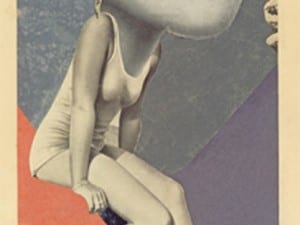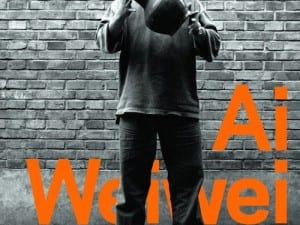Review by Katerina Valdivia Bruch
The Guggenheim Museum Berlin presents in Once Upon a Time: Fantastic Narratives in Contemporary Video, six artists from its collection that address possible or fictional realities through video. Reading the title, one might think that fairytales or myths will be the topic of the exhibition. Instead, the videos are critical reflections about society using a symbolic narrative.
The meditative video of Chinese artist Cao Fei, who was a resident artist at the Osram factory in China thanks to a bursary from the Siemens Art Program, gives a hint about this. During six months, she had the opportunity to talk to the employees and ask them questions about their daily lives, their dreams and how they motivate themselves to leave their homes in order work in a factory. From these regular meetings and talks, she created the video Whose Utopia (2006), divided in three parts –Imagination of Product, Factory Fairytale and My Future Is Not a Dream. Whose Utopia pays attention to the individual wishes and dreams of the employees, who are performing their dreams, either dancing or playing music, while working. Almost simultaneously, a girl is dancing wearing an angel’s dress and some seconds later we see her in her normal working clothes. Another moment of the video shows a young man playing an electric guitar to an absorbed and non stopping working audience. The song, My Future is not a Dream evokes a melancholic resignation of dreams that might not come true.
In a similar way, Argentinean artist Mika Rottenberg presents a claustrophobic and absurd working atmosphere in her video installation Dough (2006). A group of women with exaggerated bodily proportions – either extremely fat, with long fingers or flexible extremities – are working in a small and warm place cutting, extending, turning and packing a big piece of pastry, that is sent to the other women colleagues by an obese employee, who is constantly kneading the dough. This claustrophobic atmosphere is augmented by a wooden installation, giving the audience a little frame to see what is happening in this environment, in which flowers create allergic reactions, and tears and sweat help to enlarge the dough. In some way, both videos are reflections on modes of exploitation of labourers in factories, generally organised by foreign businesses from rich industrial nations.
Francis Alÿs’ When Faith Moves Mountains (2002) is a utopian look at inclusive cultures. In a slum in the outskirts of Lima, Peru, the artist asked 500 people to literally ‘move’ a dune, scooping it some centimetres above its level. The artist created this piece for the third Lima Biennial (2002), motivated by the political situation of Peru during the corrupt government of former president Alberto Fujimori (1990-2000). The symbolic movement of the mountain by the group is almost an act of faith, pointing out that every single individual is important in order to reach a common goal. The geological displacement is a ‘social allegory’ and, as the artist says: “When Faith Moves Mountains attempts to translate social tensions into narratives that in turn intervene in the imagined landscape of a place. The action is meant to infiltrate the local history and mythology of Peruvian society (including its art history), to insert another rumour into its narratives. If the script meets the expectations and addresses the anxieties of that society at this time and place, it may become a story that survives the event itself. At that moment, it has the potential to become a fable or an urban myth.”
What if the landing on the moon would have been done by women? This question is answered by Aleksandra Mir in her video First Woman on the Moon (1999). Commemorating the 30th anniversary of landing on the moon by the troupe of Apollo 11, the artist recreates a fake moon landing on a beach in the Netherlands. Parodying the historical moment, the episode is recorded by the press, including the creation of sand craters by huge caterpillar bulldozers. The epic and almost magic moment is when the US American flag is planted on the ground by a woman, mocking a moment that some people consider part of a conspiracy theory.
Another moon landing is the one presented in One Million Kingdoms (2001) by French artist Pierre Huyghe. The protagonist of this animated story is the Japanese manga character Annlee, purchased by Pierre Huyghe and Philippe Parreno in 1999, ‘rescuing’ it from being condemned to be buried in oblivion. In this video, Huyghe gives Annlee a new role as a solitary girl walking on the moon. A landscape of mountains appears, when the girl starts to speak. However, her voice is an electronic version with excerpts of talks by astronaut Neil Armstrong during the landing on the moon in 1969, interrupted by extracts of Jules Verne´s novel A Journey to the Center of the Earth (1864), as if the girl is remembering passages of fictional and real stories, and overall about mass-mediated myths.
In this exhibition, myths and fables are presented as actual reflections on society, veiled with symbols and allegories about reality, for instance gender inequality and inhuman working conditions. The concept of creating a utopian world in contemporary art expresses that, once upon a time, another world was possible.
Once Upon A Time runs until 9 October.
deutsche-guggenheim-berlin.de
Aesthetica Magazine
We hope you enjoying reading the Aesthetica Blog, if you want to explore more of the best in contemporary arts and culture you should read us in print too. In the spirit of celebration, Issue 41 includes a piece on Guggenheimn Bilbao where the Luminous Interval features internationally acclaimed artists such as Louise Bourgeois, Kiki Smith and Damien Hirst, ArtAngel’s new commission at MIF, Bruce Nauman’s retrospective at The Kunsthalle Mannheim and Cory Arcangel’s Pro Tools at the Whitney in NYC. You can buy it today by calling +44(0)1904 479 168. Even better, subscribe to Aesthetica and save 20%. Go on, enjoy!
Image:
© 2011 Cao Fei, Vitamin Creative Space, Guangzhou





